Chapter 6
People Living, Working and Playing Together.......... 70
Dallas County Partners ........................................... 84
About the Cover Artist............................................139
About the Author ....................................................140
About the Photographer .........................................141
Sponsors .................................................................. 142
C O N T E N T S
3





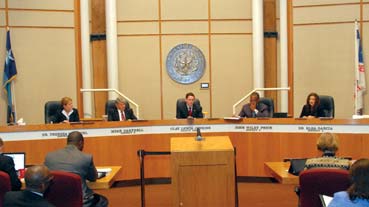

Dallas County:
A 21st Century Mosaic
Historically, Dallas County has always been an area where many seemingly unrelated features have come together to produce something remarkable and unexpected.
Even before man arrived, it was where the prairie met a limestone escarpment and where the East Fork and the West Fork joined to create the main stem of the longest wholly-contained river in Texas.
Now, centuries later, Dallas County is no different. It is where people of all ages, backgrounds, nationalities, and faiths live and work together. One-fourth of its population is foreign-born, and it is regarded as being one of the most advantageous locations for both retirees and college graduates.
Its 900 square miles are crisscrossed by four interstate highways, over 100 miles of hard surface trails, and a light rail system that is larger than those in Philadelphia or Boston. DFW airport, with over 600,000 flights and 58 million passengers a year, is the eighth busiest in the entire world.
This intersection and merging of forces continue to give the county a unique vibrancy. It is the home to thirty cities, a population of almost 2.5 million, and the fourth-largest concentration of Fortune 500 corporate headquarters in the country.
It is where the Slurpee, the integrated circuit, the single-chip microcomputer, and Liquid Paper were invented. It is where Hall of Fame baseball player Ernie Banks, golfer Lee Trevino, Bugs Bunny creator Tex Avery, playwright Preston Jones, journalist James Lehrer, track star Michael Johnson, and musicians T-Bone Walker, Norah Jones, Stevie Ray Vaughn, Edie Brickell, and Boz Scaggs were either born, raised, or developed their skills. It is where Nobel Prize-winning scientists have taught and conducted their research in medicine, genetics, physics, and chemistry.
What Dallas County thus resembles is not as much as a busy metropolitan area as a wonderful economic mosaic of people, colors, and energy.
DALLAS COUNTY COMMISSIONERS COURT
County Judge Clay Jenkins
Dr. Theresa Daniel, District 1
Mike Cantrell, District 2
John Wiley Price, District 3
Dr. Elba Garcia, District 4
Top: The Dallas County Commissioners Court in session.
Left: From top to bottom, County Judge Clay Jenkins; Dr. Theresa Daniel, District 1; Mike Cantrell, District 2; John Wiley Price, District 3; and Dr. Elba Garcia, District 4.
D A L L A S C O U N T Y : A 2 1 s t C e n t u r y M o s a i c 4

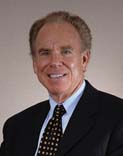

Foreword
Marianne and I moved to Dallas in 1969 after I was drafted by the Dallas Cowboys and began my career as quarterback. During my eleven years with the team, we won two Super Bowls as
“America’s Team,” but it was off the field that I discovered a passion for business. Dallas was a fairly progressive cosmopolitan city in Texas and people were coming from all over—creative businesses, small businesses and large corporate headquarters. The available opportunities were almost endless.
Football contracts weren’t what they are today, so I chose a career in commercial real estate at Henry S. Miller Company during the off-season to support my growing family. In 1977, I founded The Staubach Company, and at the time, our business model was very innovative. But that’s the beauty of Dallas; the city encourages an entrepreneurial spirit.
Our firm was fortunate enough to bring some of the most notable
companies to Dallas in the early ’80s; it’s a trend that hasn’t slowed since.
Today the Metroplex continues to attract global and national headquarters, in large part as a result of our highly educated population, business friendly economy and central location.
People, on the other hand, are attracted to Dallas for its low cost of
living, competitive school systems, vibrant Arts District, culturally diverse neighborhoods, world-class green spaces like Klyde Warren Park, and
numerous sports teams. There is truly something for everyone to enjoy.
Over the past thirty years, I’ve been involved in many of the pioneering changes in Dallas and I see a very positive vision for our city in the future, in fact for all of Texas. Marianne and I got lucky coming here so many years ago; Dallas is a great place for family and business.
Roger T. Staubach
Executive Chairman, Americas
Jones Lang LaSalle
Top: Roger Staubach.
Above: Marianne and Roger Staubach with their grandchildren.
F O R E W O R D
5


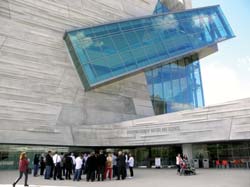

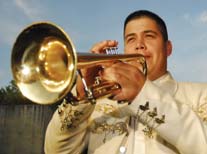
Intr
In o
tr d
o u
d c
u ti
c o
ti n
o
Say “Dallas” to a room full of people and they
will conjure up a host of images. Football, oil
wells, business tycoons, trend-setting fashion,
haute cuisine, blues music, electronics, education, banking and scientific research would be just some of the things that “Dallas” meant to them.
Those people, however, would not realize that their impressions of “Dallas” are frequently found in Dallas County, not the City of Dallas. There are 900 square miles—which makes it geographically large enough to hold four Chicagos—and thirty cities, including Dallas—with a number of these cities having populations greater than the capitals of several states—that are contained within Dallas County.
While many of these cities retain their individual character, most people, even residents of the area, are unaware as they pass from one to the other. The designation
“Metroplex” was coined for good reason as regional growth has led to a blurring of geographic designations.
This blending and merging has indeed created a fascinating mosaic with the colors and variety of a kaleidoscope, the multi-cultural character of a world-class region and the strength and vitality of a thriving business community.
–Jan Almon
D A L L A S C O U N T Y : A 2 1 s t C e n t u r y M o s a i c 6

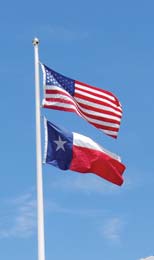
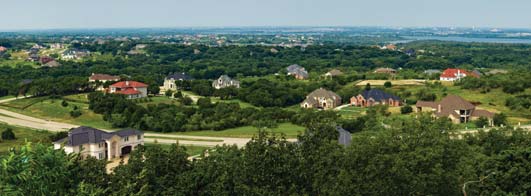
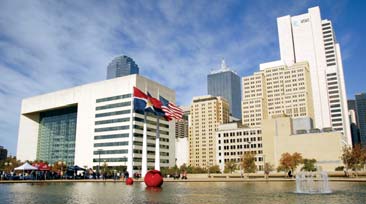
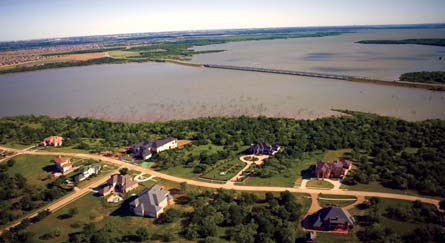
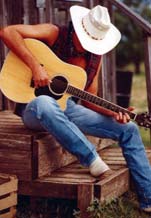
I N T R O D U C T I O N
7


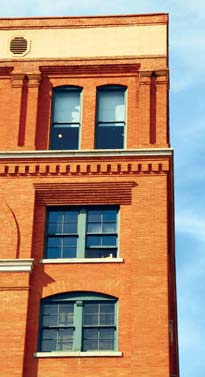

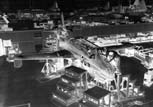

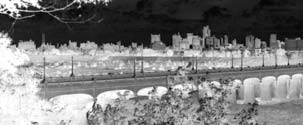

Black and whites above, clockwise, starting at the top left:
John Neely Bryan was a Tennessee trader credited with founding Dallas in 1841. His cabin and trading post sat near where the JFK Museum
County’s Historical Plaza on Commerce Street is presently located. This cabin is a replica of what was used during Bryan’s era.
PHOTOGRAPH COURTESY OF THE DALLAS HISTORICAL SOCIETY.
The State Fair of Texas became one of the city’s key economic drivers throughout the 1900s. The fair attracted hundreds of thousands of visitors each year, who enjoyed rides, food and games on the Midway (pictured here) as well as the myriad products and livestock exhibited.
PHOTOGRAPH COURTESY OF THE DALLAS HISTORICAL SOCIETY.
By the early 1930s, downtown Dallas was dotted by a number of skyscrapers, offering evidence of the city’s thriving business environment despite the adverse effects of the Great Depression. By this time, the County’s cotton and wholesale markets were strong, retail and manufacturing industries were flourishing, and the aviation and banking industries were on the rise, 1933.
PHOTOGRAPH COURTESY OF THE COLLECTION OF THE TEXAS/DALLAS HISTORY AND ARCHIVES DIVISION. DALLAS PUBLIC LIBRARY.
Workers assembled planes at the Chance Vought factory in Grand Prairie following the company’s relocation from Bridgeport, Connecticut in 1948.
PHOTOGRAPH COURTESY OF THE COLLECTION OF THE TEXAS/DALLAS HISTORY AND ARCHIVES DIVISION. DALLAS PUBLIC LIBRARY.
The Houston & Texas Central Railroad pulled into Dallas for the first time in 1872. The railroads ushered in an unprecedented era of economic expansion and business growth.
PHOTOGRAPH COURTESY OF THE DALLAS HISTORICAL SOCIETY.
Right: The Texas Book Depository is now the Dallas County Administration Building and home of the Sixth Floor Museum.
The Warren Commission concluded that, on November 22, 1963, Lee Harvey Oswald fired the shots that killed President John F. Kennedy from the sixth floor window. The museum chronicles the assassination and legacy of President Kennedy and explains the Dealey Plaza National Historic District and John F. Kennedy Memorial Plaza.
D A L L A S C O U N T Y : A 2 1 s t C e n t u r y M o s a i c 8
There is a long established real estate mantra about location, and there is no doubt that location has been a key factor in the past, present and future of Dallas County.
John Neely Bryan selected a site for his trading post in 1841
because what was to become the City of Dallas was a natural
crossing point of the Trinity River. Native Americans and
pioneer traders used it regularly, and it became the
designated path for the Preston Trail that was planned
to link North and South Texas.
Dallas County began as an agricultural area.
The black, waxy soil, coupled with the prevailing
sunny climate, is nearly perfect for the
cultivation of staple crops. Ample water
from the Trinity River and the relatively
C H A P T E R
flat topography were also benefits.
Dallas County became the world’s
largest inland cotton market in the
early 1900s.
BUILDING BLOCKS
OF THE PAST
C H A P T E R 1
9
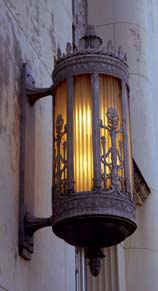
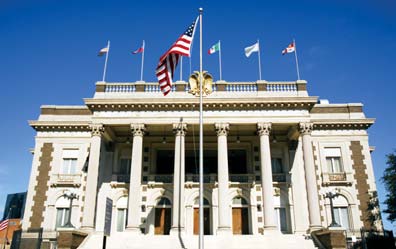
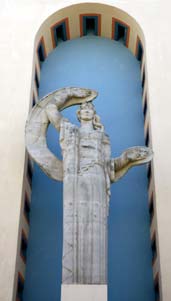


Dallas County continued to prosper as
The crossroads designation became impor-
Texas became a republic in 1836 and voted to
tant as railroads began to select their routes
be annexed by the U.S. in 1845. The county
creating the next business boom with five
was officially created in 1846, and a hotly con-
railroads by 1885. Two railroads originated
tested election resulted in the City of Dallas
in Dallas and tracks literally ran in every
being selected as the county seat in 1850.
direction. The railroads led to the rise of other
In the 1840s and 1850s, Dallas County
Dallas County communities as railroad stops
had the advantage of being a crossroads for
were placed at Grand Prairie, Mesquite,
two major roadways: The Military Road from
Rowlett, Carrollton, Irving, Rylie, Richardson,
Austin to the Red River and Preston Road,
Simonds, Seagoville and Sachse.
which was the link between North and South
Texas. In 1846, Dallas County Commissioners
approved building roads to contiguous
counties, and the basis for Dallas County to
become a major distribution center was born.
Above: A graceful sconce adds a touch of glamour to a Dallas County building.
Right: Fair Park in Dallas has the largest collection of 1930s Art Deco architecture in the United States and is the only unaltered pre-1950s World’s Fair site in the nation. Architect George Dahl was hired to make the site of the State Fair of Texas ready for the State of Texas Centennial Celebration in 1936.
In 1948, the Automobile Building (shown here) replaced one that burned after the exposition.
Below: The Scottish Rite Temple of Freemasonry was built in the early 1900s at the corner of Harwood and Young Streets in downtown Dallas. An imposing Corinthian frontage faces Harwood. The interior features a diversified décor reflecting everything from the Egyptian Kings to the Colonial period.
Dallas City Hall
D A L L A S C O U N T Y : A 2 1 s t C e n t u r y M o s a i c 10
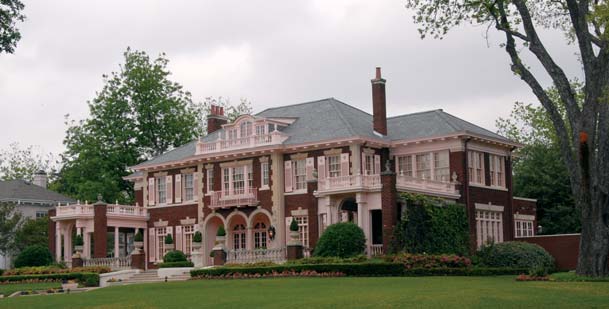


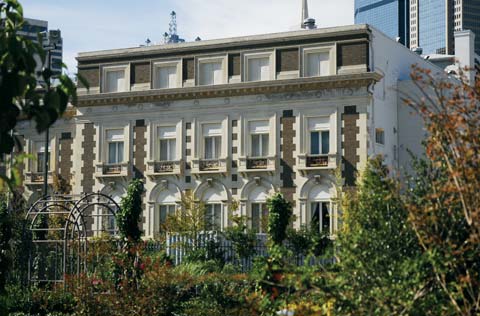
Above: The Swiss Avenue neighborhood is among the area’s designated historical landmarks. The Dallas County Historical Commission is the first level of review for all state historical markers. Other neighborhoods designated as historic include Munger Place, South Boulevard-Park Row and State-Thomas.
Swiss Avenue
Historic District
Below: The rear of the Scottish Rite Temple continues the merger of styles that mark the building.
C H A P T E R 1
1 1




Big Tex is the iconic symbol of The State Fair of Texas
and has served as its marketing ambassador since 1952.
An electrical fire in October 2012 destroyed the fifty-two-foot
tall statue. His newest incarnation was unveiled at the
start of the 2013 State Fair.
Cotton Bowl
Stadium
D A L L A S C O U N T Y : A 2 1 s t C e n t u r y M o s a i c 12
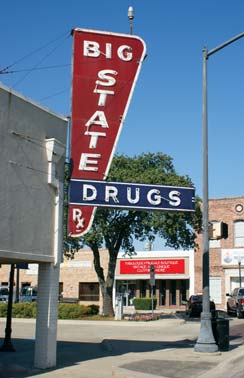
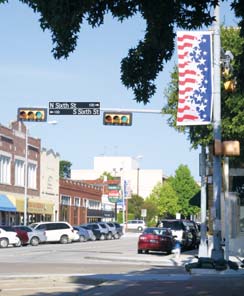

Opposite, bottom: The Cotton Bowl opened
in 1930 replacing a wooden stadium at
Fair Park in Dallas. From 1937 to 2009,
the Cotton Bowl Classic, an annual NCAA
Division 1 bowl game, was held here.
The Dallas Cowboys called the Cotton Bowl
home for twelve seasons. Currently, it is the
site of the annual Red River Rivalry held
between the University of Oklahoma
All this activity led to a healthy transporta-
In 1950, 89.8 percent of Dallas County
Sooners and the University of Texas
tion system by 1910 boasting 1,200 miles of
was considered urban and the whole County
Longhorns during the State Fair of Texas.
public roads and more than 295 miles of
was declared the Dallas Metropolitan
The Cotton Bowl has hosted many other
railroads. Four years later, fourteen railroads
Statistical Area by the census bureau. Other
football and soccer games, concerts and
served the area, including four electric
significant events contributing to business
other sports events. Films, television and
interurban railways moving between Dallas
growth were the result of the foresight and
music videos often have used The Cotton
County communities and other nearby towns
cooperation of a number of political and busi-
Bowl as a backdrop.
such as Fort Worth or Sherman.
ness leaders. These included Dallas’ selection
The transition of Dallas County from a
as the host city for the Texas State Fair and
Top, left: The Big State Drug sign in
rural to an urban area began about 1920 as
Dallas Exposition in 1887, becoming the site
Irving reminds visitors of an earlier time.
farming declined and manufacturing grew.
of the Texas Centennial Exposition, the selec-
Today it is a family run soda fountain,
Dallas County was able to survive the Great
tion of Dallas as the site for the Eleventh
grill and pharmacy.
Depression with the discovery of oil in
District Bank by the Federal Reserve Bank and
East Texas. Dallas and other communities
successful lobbying when the federal govern-
Top, right: The main street of downtown
in the county became an operational center
ment was the selecting routes for the nation’s
Garland reflects the history that is an
and funding source for oil exploration and
major roadways. Dallas County also succeed-
important element in many Dallas
production companies as well as firms
ed in become an aviation center and attracting
County cities.
providing oil field equipment and services.
defense contractors during both World Wars.
PHOTOGRAPH COURTESY OF
GARLAND CHAMBER OF COMMERCE.
C H A P T E R 1
1 3
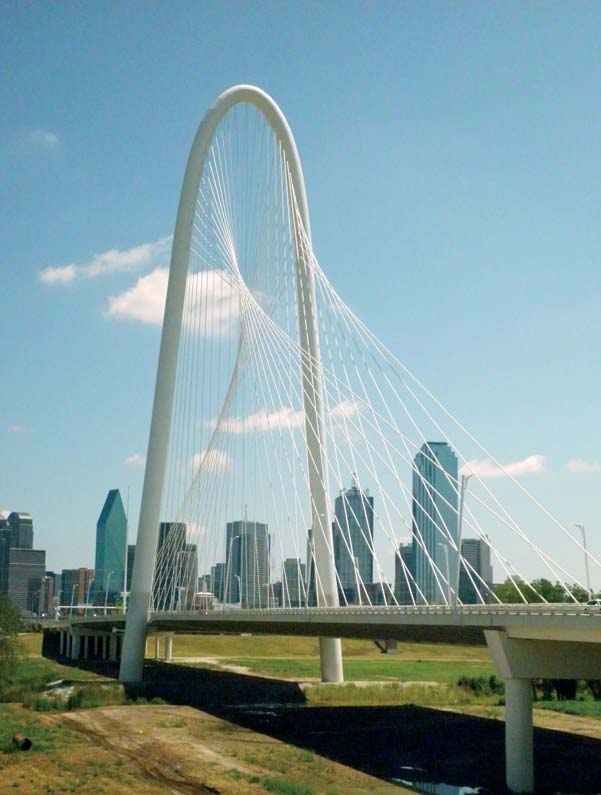

November 22, 1963 gave Dallas a lasting
place in the history books. Near the spot
The Margaret Hunt Hill Bridge opened in
where John Neely Bryan had first settled,
March 2012 as part of the Trinity River
President John F. Kennedy was assassinated.
Project. The bridge connects Woodall Rodger
It was a defining moment for the nation, and
Freeway in downtown Dallas to Singleton
one Dallas never forgets.
Avenue in west Dallas. The Trinity River
Cooperation also led to the creation of
Project began with a bond proposal in 1998
the Dallas Fort Worth Regional Airport that
to redevelop the river into recreational
opened in 1974 and is perhaps the single most
areas near downtown.
important event for economic development
PHOTOGRAPH COURTESY OF
in Dallas County. The airport was renamed
BARBARA LANE PHOTOGRAPHY.
the DFW International Airport in 1985, and
it has spurred corporate relocations and
development since the beginning. Dallas
County has one of the largest concentrations
of corporate headquarters for publically-traded
companies in the United States, and eighteen
Fortune 500 companies are located here.
D A L L A S C O U N T Y : A 2 1 s t C e n t u r y M o s a i c 14
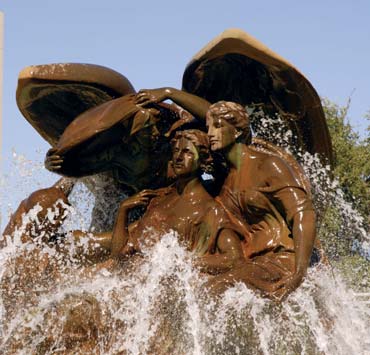


Left: The Gulf Clouds Fountain,
a massive bronze and granite sculpture,
was unveiled in October 1916.
The fountain commemorates the
contributions of the State Fair’s first
secretary, Captain Sydney Smith, and was
created by Miss Clyde Gitner Chandler.
In the 1980s as oil, banking and real estate
The location of Dallas County in the center
Having been moved three times,
declined, the information and telecommunica-
of the nation and the continent has been a
the fountain now graces a lawn at
tions sectors played essential roles in sustaining
factor in nearly every significant achievement
the west end of the park.
the local economy. Today, a knowledge-based
it has seen. Coupled with the ability of its
service economy is prevalent, while Dallas
leadership throughout the decades to recognize
Below: Food trucks are part of most events
County remains one of the nation’s largest
and capitalize on opportunities, it has led to
and festivals around Dallas County and
warehouse and distribution centers.
enviable accomplishments.
always attract a good crowd.
C H A P T E R 1
1 5

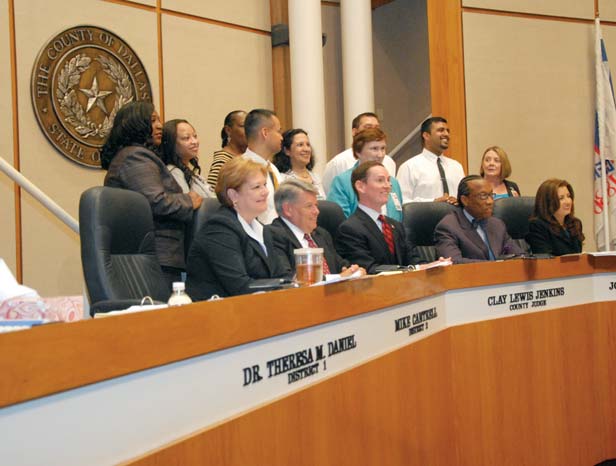
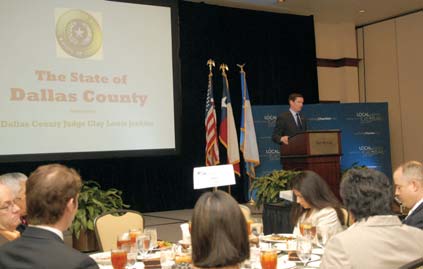
Left: Dallas County Judge
Clay Jenkins presents the annual
State of the County speech to
interested business leaders and
citizens. Jenkins began his first
term in office in January 2011.
Below: The Dallas County
Commissioners Court in session.
























































